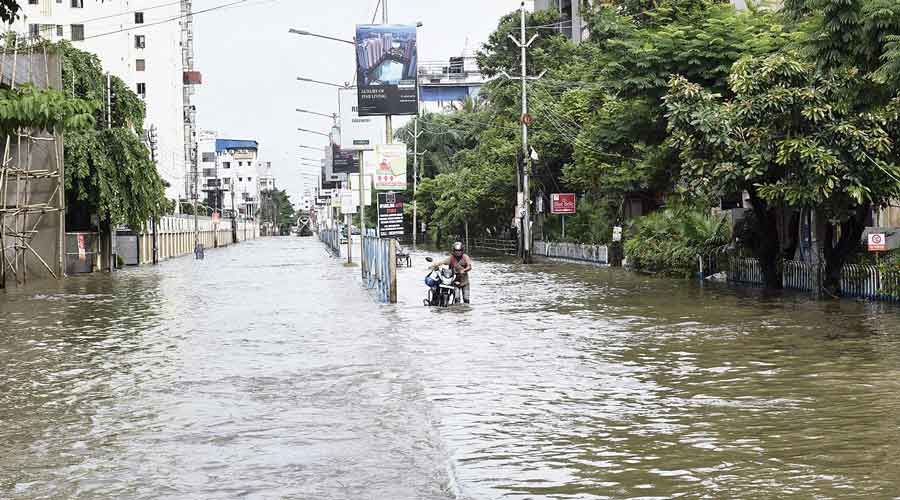Hundreds of people who have spent a fortune to buy apartments in Mukundapur and surrounding areas are now repenting their decision having suffered frequent and prolonged waterlogging in the neighbourhood.
Unlike many other parts of Kolkata, water takes days to recede from the Mukundapur belt.
A foul smell emanates from the stagnant water. It becomes difficult to take out cars or two-wheelers because the engines might get choked.
No taxi or app cab agrees to pick up passengers from the area or drop them off there. Residents are often forced to skip office because of waterlogging.
In some housing complexes, water enters parked cars and elevators.
The lure of living so close to the EM Bypass and near hospitals drew these people to Mukundapur. The New Garia-airport Metro corridor, which is being built, is another factor why many people chose to buy flats here.
But many are rueing their choices.
Apartments here cost nothing less than Rs 65 lakh, while a flat in a luxury housing estate is worth over Rs 1 crore.
“If I had any knowledge about the scale of waterlogging here, I would never have purchased the flat. I have been living here for a year and it has been a nightmarish experience,” said Tania Das, a resident of an apartment in a building opposite AMRI Hospitals Mukundapur.
Das shares a housing complex with 16 other families. One reason why she decided to buy the flat was its proximity to the New Garia-airport Metro corridor.
Once the Metro line became operational, commuting would be easy, Das had thought. But she was not prepared for a situation that would force her to skip office every monsoon.
“I can hardly step out after a spell of heavy rain. I have to walk till the Bypass to board a bus and the road goes waist deep water under when it rains,” said Das, a director of a blood bank.
The water reservoir in many of the complexes, including where Das lives, and standalone homes goes under water. Residents then have no option but to depend on bottled water, which they buy after wading through flooded streets.
“Each time the rain continues for an hour or more, I get nervous thinking about the troubles that will follow,” said Chandan Banerjee, who settled in Mukundapur in 2000.
Banerjee said there were still many open drains in the area and it would become difficult to distinguish an open drain from the road after a spell of heavy rain.
A 50-year-old resident of Nayabad, near Mukundapur, said street lights were switched off in the area fearing electrocution, which made it further difficult for those who were out on the streets.
The Kolkata Municipal Corporation’s engineers blame a number of factors for the waterlogging in the belt. They said large parts of the neighbourhood did not have any underground drainage network.
Besides, the canals that drain out water have not been dredged for years.
“The capacity of canals has reduced significantly. The Tollygunge-Panchannagram canal, the primary canal that drains out water from the area, needs a thorough dredging,” said a KMC engineer.
Laying a new drainage network and dredging of canals both are time-consuming. No one could say how the waterlogging in the belt can be managed till then.
